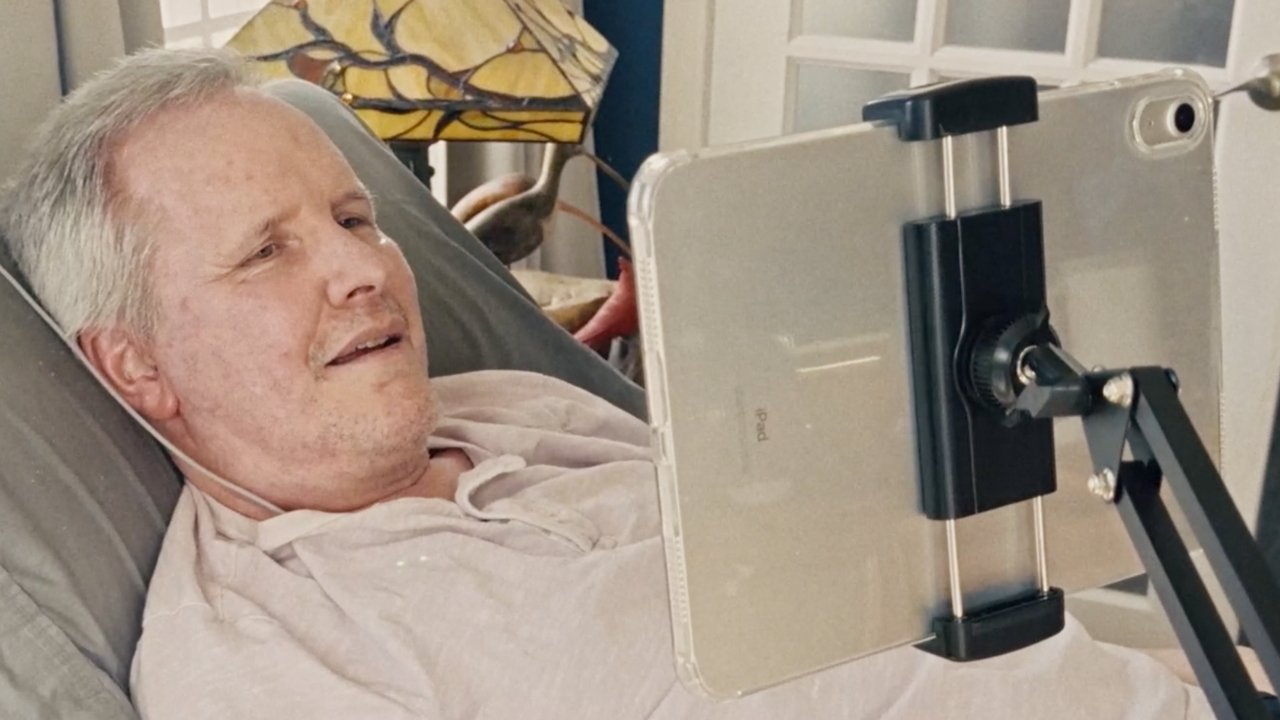Technology
ALS Patient Demonstrates Thought Control Using iPad Technology

A patient suffering from amyotrophic lateral sclerosis (ALS) has successfully demonstrated the ability to use an iPad solely through thought control, showcasing a groundbreaking advancement in assistive technology. Mark Jackson, the patient involved, is utilizing a prototype developed by Synchron, a medical technology company, which illustrates the potential of Apple’s Brain-Computer Interface Human Interface Device (BCI HID) protocol.
The BCI HID protocol, introduced in May 2025, consists of a standardized series of controls available as an application programming interface (API). This allows developers to create applications that can interact with the brain-computer interface technology. Synchron initially showcased this system by enabling Jackson to navigate the Apple Vision Pro using only his thoughts, marking a significant milestone in the field of neurotechnology.
Revolutionizing Communication for ALS Patients
The latest demonstration involves Jackson using the iPad to perform various tasks without the need for physical interaction. This capability is crucial for individuals with ALS, who often experience severe physical limitations that hinder their ability to communicate effectively. By harnessing thought control, these patients can regain a level of independence previously thought unattainable.
Synchron’s technology relies on a small implant placed in the brain that detects neural signals associated with desired actions. The system then translates these signals into commands that the iPad can understand. This innovative approach not only enhances the quality of life for users like Jackson but also opens new avenues for research and development in assistive devices for individuals with mobility impairments.
Jackson expressed his enthusiasm about the technology, stating, “Being able to communicate and interact with the world through thought is life-changing.” His experience underscores the human impact of such advancements in technology, illustrating how they can empower patients and improve their daily lives.
Future Implications for Assistive Technology
The implications of this technology extend beyond individual users. As developers and researchers continue to refine the BCI HID protocol, a broader range of applications may emerge. This could include enhanced communication tools, smart home systems, and other assistive devices that rely on thought control, potentially benefiting millions of individuals with various disabilities worldwide.
The collaboration between Synchron and Apple represents a significant step forward in the integration of advanced technology with healthcare solutions. As more patients like Mark Jackson gain access to these innovations, the landscape of assistive technology is likely to evolve rapidly, providing new opportunities for enhancing communication and overall quality of life.
In summary, the demonstration of thought control through an iPad by ALS patient Mark Jackson highlights a remarkable advancement in neurotechnology. With the support of Synchron and Apple’s BCI HID protocol, this breakthrough not only showcases the potential for improved communication for those with severe physical limitations but also sets the stage for future developments in assistive devices.
-

 Politics4 weeks ago
Politics4 weeks agoSecwepemc First Nation Seeks Aboriginal Title Over Kamloops Area
-

 World5 months ago
World5 months agoScientists Unearth Ancient Antarctic Ice to Unlock Climate Secrets
-

 Entertainment5 months ago
Entertainment5 months agoTrump and McCormick to Announce $70 Billion Energy Investments
-

 Science5 months ago
Science5 months agoFour Astronauts Return to Earth After International Space Station Mission
-

 Lifestyle5 months ago
Lifestyle5 months agoTransLink Launches Food Truck Program to Boost Revenue in Vancouver
-

 Technology3 months ago
Technology3 months agoApple Notes Enhances Functionality with Markdown Support in macOS 26
-

 Lifestyle3 months ago
Lifestyle3 months agoManitoba’s Burger Champion Shines Again Amid Dining Innovations
-

 Top Stories2 months ago
Top Stories2 months agoUrgent Update: Fatal Crash on Highway 99 Claims Life of Pitt Meadows Man
-

 Politics4 months ago
Politics4 months agoUkrainian Tennis Star Elina Svitolina Faces Death Threats Online
-

 Sports5 months ago
Sports5 months agoSearch Underway for Missing Hunter Amid Hokkaido Bear Emergency
-

 Politics5 months ago
Politics5 months agoCarney Engages First Nations Leaders at Development Law Summit
-

 Technology5 months ago
Technology5 months agoFrosthaven Launches Early Access on July 31, 2025



















